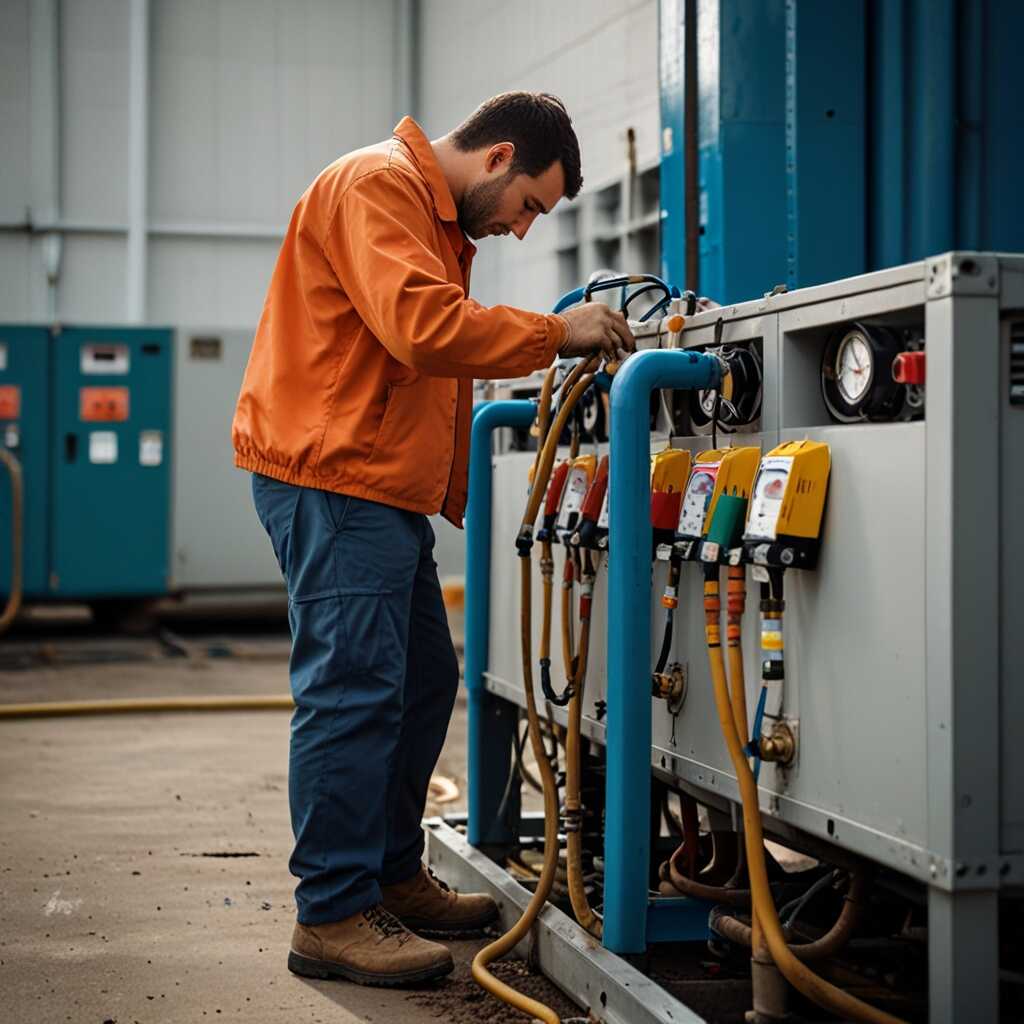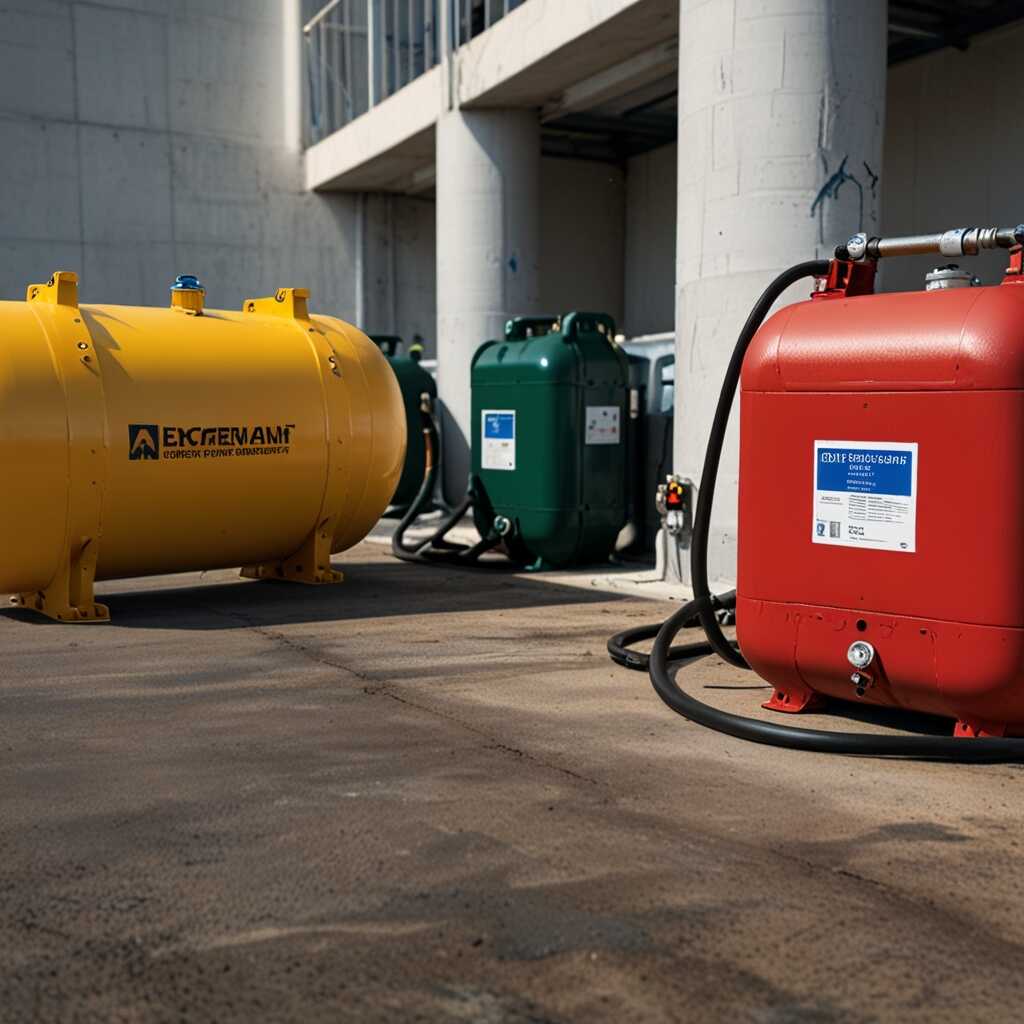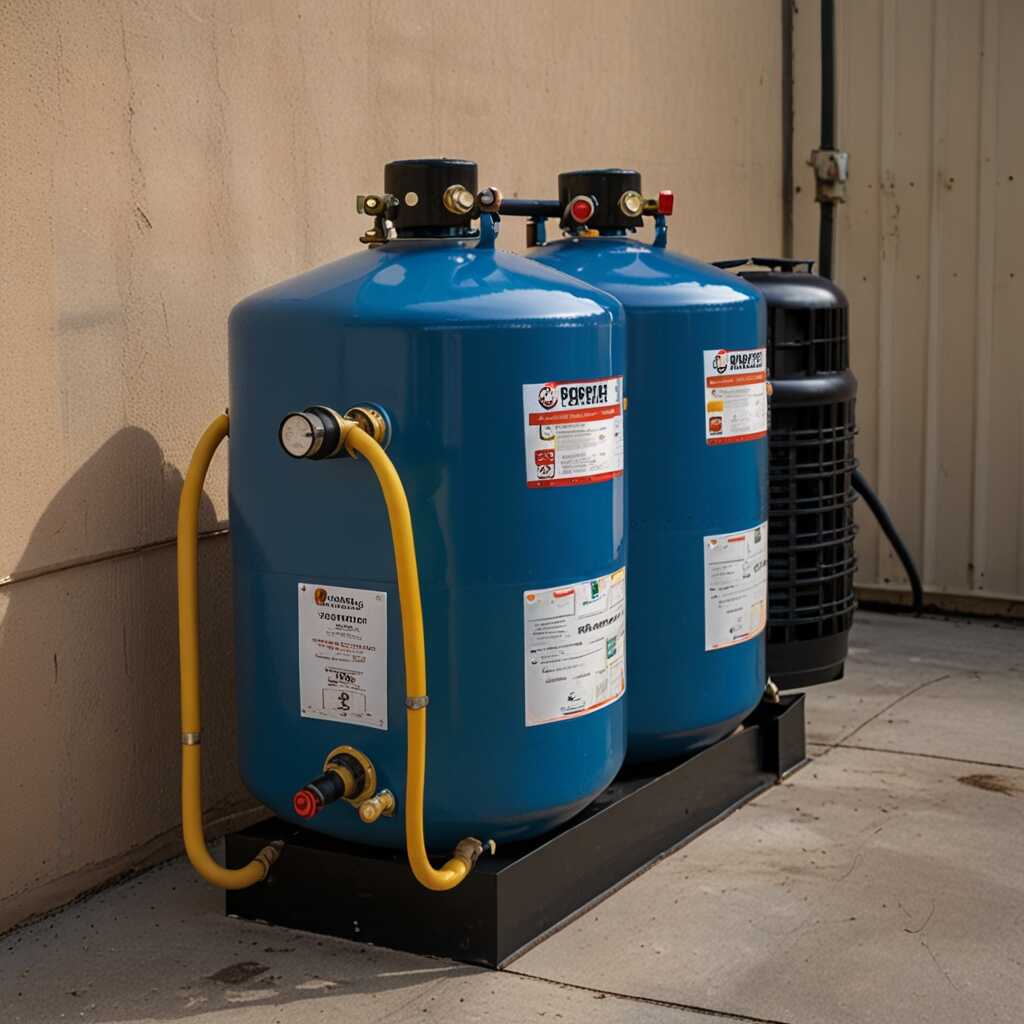Mobile refrigerant recovery units significantly enhance efficiency for HVAC technicians in the field. These portable systems streamline the refrigerant recovery process, allowing professionals to quickly and effectively service multiple job sites. By utilizing mobile units, HVAC technicians can improve their productivity, reduce downtime, and comply with important regulations. At Refrigerant Recovery Pro, we provide essential guidance on how these units can optimize your refrigerant recovery methods for better results.
Key Advantages of Mobile Refrigerant Recovery Units
Mobile refrigerant recovery units offer numerous advantages for HVAC technicians. These units enhance efficiency by allowing technicians to service multiple job sites without the hassle of transporting heavy, stationary systems. Improved technician mobility is one of the key benefits. Technicians can carry these units easily, which reduces travel time between locations. Furthermore, mobile units ensure higher quality service. They are designed to handle different types of refrigerants, ensuring compliance with best practices. Overall, mobile refrigerant recovery units provide reliable performance, making them essential tools for optimizing workflow in the HVAC industry.
How Mobile Units Enhance Workflow Efficiency
Mobile refrigerant recovery units significantly enhance workflow efficiency for HVAC technicians. These units are specifically designed to be lightweight and portable, allowing technicians to easily transport them to various job sites. This mobility enables quick setup and teardown, saving valuable time. Features like automatic shut-off and integrated gauges streamline the refrigerant recovery process. Technicians can focus on their tasks without worrying about equipment reliability. Mobile units’ advanced designs provide confidence in performance. As a result, technicians can manage multiple jobs effectively, ensuring they deliver high-quality service consistently.
How Mobile Units Boost Technician Efficiency
Mobile refrigerant recovery units significantly reduce downtime for HVAC technicians by allowing quick access to essential equipment. They help technicians service multiple job sites efficiently, minimizing travel time between locations. This leads to faster service delivery and enhances overall customer satisfaction due to reduced waiting times. The quick retrieval of refrigerant improves response times significantly, often within a matter of minutes, which is vital for urgent requests.
Advantages of Fast Response Times for Technicians
The advantages of fast response times for technicians using mobile refrigerant recovery units are numerous. These units are designed for high efficiency, making refrigerant recovery quicker and more reliable. With features that provide ease of transport and setup, technicians can handle emergencies more effectively. This capability enables technicians to maintain a schedule, thereby increasing productivity. The improved service delivery results in many positive customer reviews, ultimately enhancing the reputation of HVAC businesses.

Ensuring Regulatory Compliance with Mobile Recovery Solutions
Mobile refrigerant recovery units help technicians achieve EPA compliance by ensuring safe refrigerant handling. These units are designed to meet federal regulations and assist in complying with local guidelines. HVAC technicians must stay informed about EPA rules and understand the implications of their work on environmental protection. Efficient use of mobile recovery units can prevent leaks and reduce gas emissions while servicing multiple job sites. Working with reliable equipment enhances safety and ensures adherence to standards, crucial for protecting workers and the environment.
Understanding Local Compliance Requirements For Technicians
Local compliance requirements vary for HVAC technicians, depending on state and municipality rules. It’s essential for technicians to research their local regulations regarding refrigerant recovery. For instance, some states mandate specific certifications for recovery unit operation or have unique reporting requirements. Mobile recovery units enable technicians to work efficiently while meeting these local compliance standards. Understanding these nuances is vital for ensuring safe and environmentally responsible practices in refrigerant management.
Key Statistics Highlighting Efficiency Boosts
- Over 70% of HVAC technicians report time savings using mobile refrigerant recovery units.
- Recovery units reduce refrigerant recovery time by approximately 40% per service call.
- Technicians can service up to 3 job sites daily due to increased efficiency.
- Mobile units allow recovery of up to 90% of refrigerant in a single cycle.
- On average, companies see a 30% increase in revenue when using these units.
- Technicians save an average of 1.5 hours per job when employing mobile solutions.
- 95% of technicians find mobile units easier to transport compared to stationary systems.

Mobile versus Fixed Refrigerant Recovery Equipment
The primary differences between mobile and fixed refrigerant recovery equipment revolve around their practical applications for HVAC services. Mobile refrigerant recovery units are designed for portability, allowing technicians to move easily between multiple job sites. They enhance flexibility and can handle varying service demands with ease. Fixed refrigerant systems, on the other hand, are installed at a specific location, providing a reliable solution for large-scale operations. Each has its benefits—mobile units deliver convenience and adaptability, while fixed units offer steady performance and high efficiency in a controlled environment. An HVAC technician should consider the specific job requirements, reliability, and efficiency when choosing which type of system is more suitable for their needs. For instance, a job requiring service across several locations might necessitate a mobile unit, whereas projects at a single site could benefit from a fixed system.
Choosing Between Mobile and Fixed Refrigerant Systems
When selecting a refrigerant recovery system, HVAC technicians must evaluate factors such as reliability, recovery speed, and equipment durability. Mobile refrigerant recovery units offer impressive efficiency for technicians working across various locations, enhancing productivity and reducing downtime. They usually come with features like lightweight designs, strong hoses for fast recovery rates, and easy-to-read gauges. In contrast, fixed systems may provide greater capacity and stability for extended operations at a single site. Understanding these dynamics allows HVAC professionals to make informed choices that best suit their specific operational needs and enhance their overall service quality.

Essential Features of Mobile Refrigerant Recovery Units
Technicians should focus on several key specifications when evaluating mobile refrigerant recovery units. Look for units designed with reliable performance metrics such as a fast recovery rate, often exceeding 10 pounds per minute. User-friendly features include ergonomic handles, lightweight designs, and easy-to-read gauges which help improve efficiency during service. Durability is also essential; choose units built with sturdy materials that can handle various job sites effectively. The performance of these units is crucial for ensuring compliance with environmental regulations.
Key Specifications to Enhance HVAC Service Efficiency
When selecting a mobile refrigerant recovery unit, technicians need to prioritize specifications that enhance service efficiency. A reliable unit should offer a recovery rate of at least 15 pounds per hour to meet industry demands. Features like automatic shut-off and built-in filters are significant as they prevent contamination and prolong system life. Ensure the unit is lightweight and has a compact design to make transport easy when moving between job sites. By considering these specifications, HVAC technicians can improve their overall workflow and service quality.
Advantages of Implementing Innovative Recovery Tools
- Mobile refrigerant recovery units minimize downtime for HVAC technicians during repairs.
- They enhance compliance with refrigerant management regulations by ensuring proper recovery.
- These tools improve technician safety by reducing exposure to hazardous chemicals.
- Units are designed to be user-friendly, reducing the learning curve for new technicians.
- Mobility increases flexibility, allowing technicians to work in various locations easily.
- They often include advanced features, such as automatic shut-off and built-in diagnostics.
- These units can help HVAC businesses expand service offerings, attracting new customers.

Challenges Faced Without Mobile Refrigerant Recovery Units
HVAC technicians encounter significant challenges without mobile refrigerant recovery units. Primary inefficiencies include longer travel times, which negatively impact productivity. Technicians may spend nearly 30% of their time commuting between jobs. A lack of mobile equipment also leads to reduced service quality. Technicians might struggle to comply with environmental regulations, risking penalties and damage to their reputation. In varied environments, such as residential or industrial sites, these challenges can differ significantly. Residential jobs might require quick turnaround times, while industrial jobs involve larger scale operations. Access to mobile refrigerant recovery technology provides essential support in overcoming these obstacles and improving the efficiency of HVAC technicians.
Specific Impact of Travel Time on Efficiency
Travel time directly affects the efficiency of HVAC technicians. Without mobile refrigerant recovery units, technicians often allocate valuable hours to transportation. Studies indicate that technicians lose up to 40% of their day on travel, particularly when managing multiple service calls. Mobile units eliminate the need for return trips to the shop, allowing technicians to recover refrigerant on-site effectively. This convenience enables faster service delivery, enhances customer satisfaction, and allows technicians to manage more jobs in a single day. By integrating mobile technology into their operations, HVAC technicians can deliver superior service quality.
The Role of Technology in Modern Refrigerant Recovery
Recent advancements in mobile refrigerant recovery units focus on mobility, energy efficiency, and enhanced functionality. Innovations include lighter designs and improved portability. Advanced technology integrates digital controls for precise monitoring, allowing HVAC technicians to track and manage refrigerant recovery with greater accuracy. Mobile units now often include built-in diagnostics, offering real-time data on performance and maintenance needs, which ensures reliability during service. Comparatively, traditional units lack these capabilities, affecting their overall effectiveness and convenience. Many HVAC professionals report substantial gains in efficiency as these innovations enable faster recovery times and minimize refrigerant loss, ultimately enhancing the service process.
Comparing Features of Advanced Mobile Units and Traditional Units
Advanced mobile refrigerant recovery units substantially outperform traditional systems. Key features like lightweight designs and compact sizes make them easier to transport. Integrated digital displays on newer models provide real-time monitoring of refrigerant recovery status. Advanced units also include features that automatically shut down the system when recovery is complete, reducing manual oversight. HVAC technicians can expect increased efficiency from these units, with some reporting over a 30% improvement compared to traditional units. This significant upgrade in energy efficiency directly impacts job performance, allowing for quicker service across multiple job sites while ensuring compliance with all refrigerant management regulations.
Brands and Their Use Cases in the Refrigerant Recovery Sector
- Brand A – Known for durable units with great recovery efficiency; ideal for experienced technicians.
- Brand B – Offers lightweight models perfect for residential jobs; great for entry-level technicians.
- Brand C – Provides high-capacity units for industrial applications, best for large-scale services.
- Brand D – Focuses on eco-friendly units designed for compliance with environmental regulations.
- Brand E – Features user-friendly models that enhance training for new HVAC professionals.
- Residential customer demographic prefers lightweight, easy-to-use units for home AC services.
- Commercial clients typically require high-capacity units for efficiency in larger spaces.
Future Innovations in Refrigerant Recovery Systems
Recent advancements in mobile refrigerant recovery systems focus on enhancing efficiency, reliability, and ease of use for HVAC technicians. Innovations include automated controls, smart technology integrations, and enhanced portability. These features help technicians quickly adapt to various job sites while maintaining compliance with evolving regulations. The industry anticipates that refrigerant recovery systems will increasingly incorporate data analytics to optimize performance. Research from industry experts suggests these advancements can lead to a 20% improvement in recovery efficiency by 2025, addressing technician needs and environmental concerns.
Key Features in Upcoming Mobile Recovery Solutions
Upcoming mobile refrigerant recovery solutions are designed to meet the specific demands of HVAC professionals. These systems will feature lightweight and compact designs, making them easy to transport across job sites. Enhanced connectivity features will provide real-time data on refrigerant levels, improving decision-making during service calls. The introduction of modular components will enable technicians to customize their equipment based on job requirements. With these advancements, Recovery Pro aims to deliver reliable systems that help HVAC technicians achieve optimal performance and compliance.